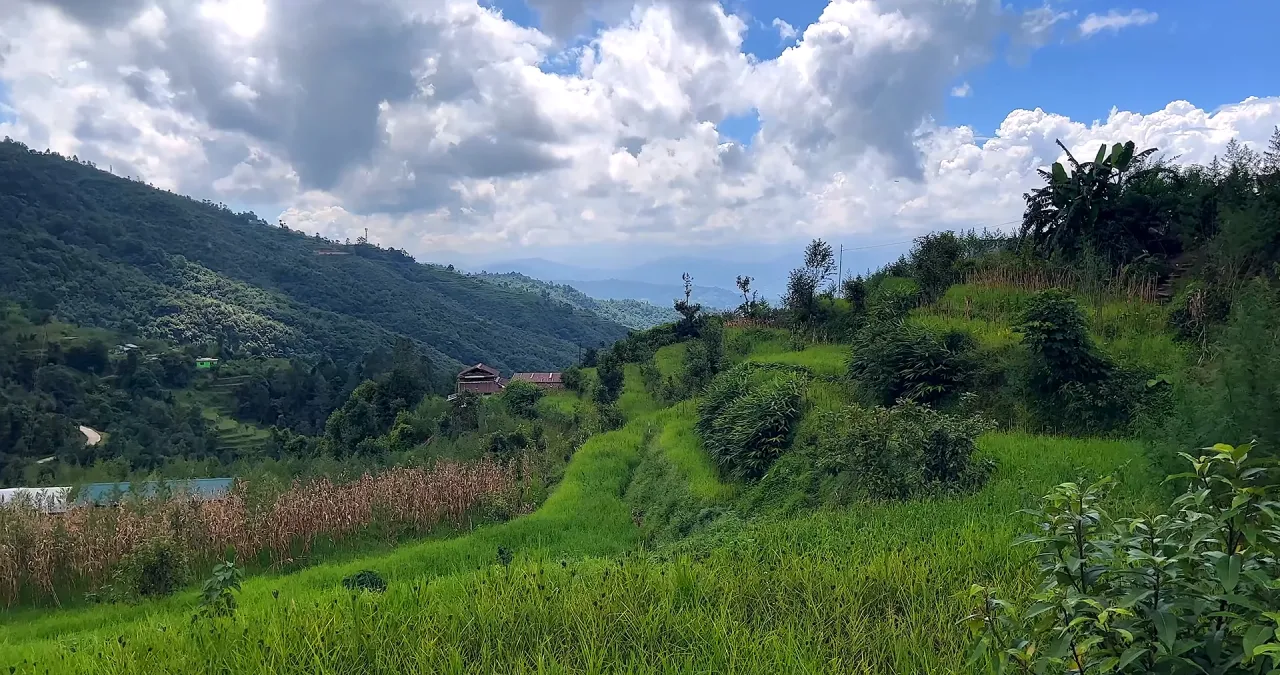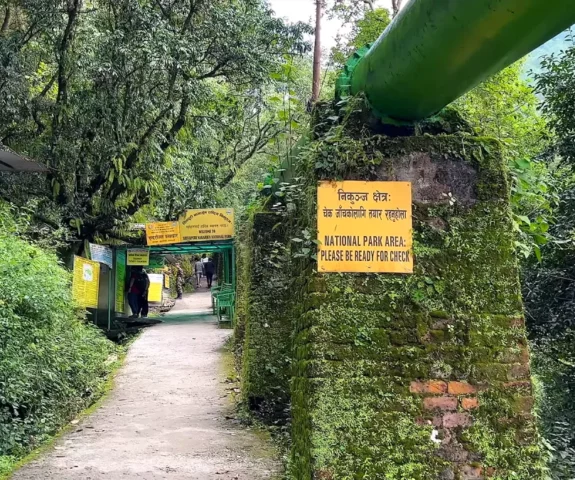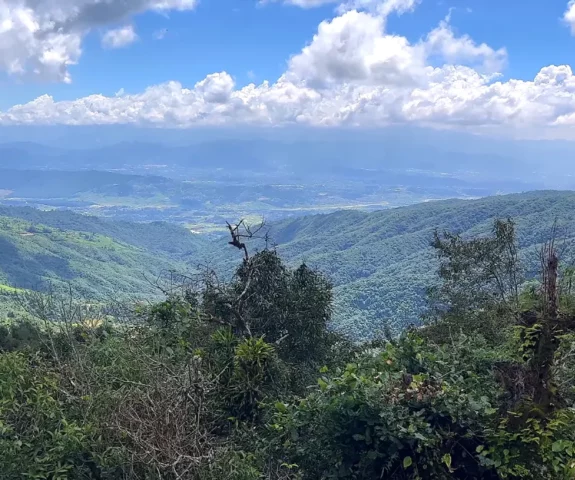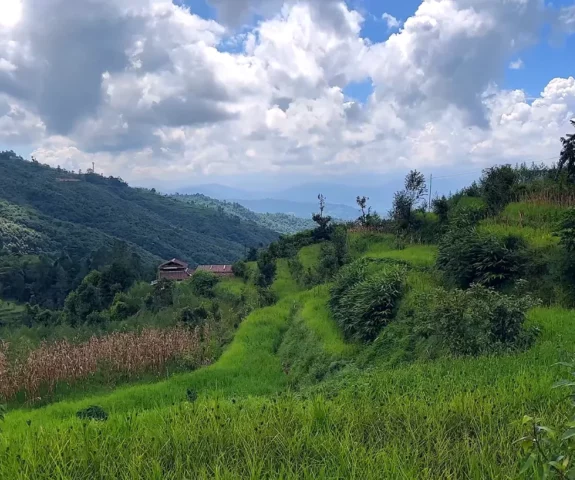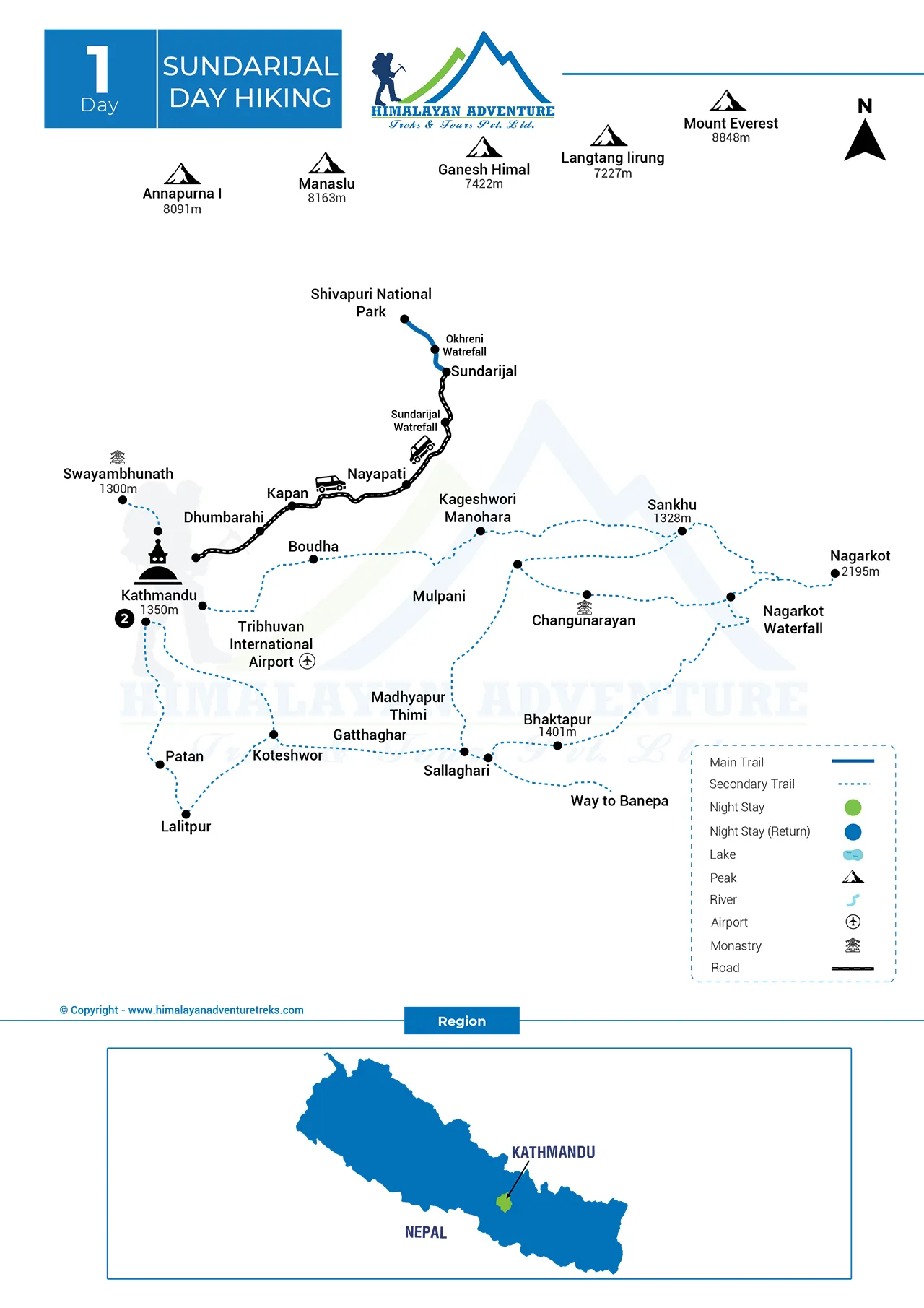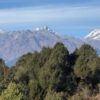Duration
1 DaySundarijal Day Hiking
Trip Grade
EasyGroup Size
1-16 PeopleMax Altitude
1,650m. / 5,413ft.Best Season
Feb-May/ Aug- NovActivity
HikingTransportation
Private VehicleTrip Customization
On request (click here)Highlights of Sundarijal Day Hiking
- An ideal place of the day hiking near Kathmandu.
- Rich in Nature with different species of animals and flora and fauna.
- The historical area with an attractive big pond.
- Main water supply area for Kathmandu.
Trip Introduction
Sundarijal Day Hiking itself the name is enough to attract visitors. Sundari means Beautiful, and Jal means Water; it means Beautiful Water. Beautiful place which is 15 km northeast of the Capital Kathmandu valley, it is named after the Hindu Goddess Sundarimai. Sundarijal covers an area of 5.18 square km.
It is located at the center of an ancient forest, belonging to the Shivapuri National Park, and is highly diverse in vegetation like pine trees, oak trees, rhododendron flowers during the spring cover the jungle with different colors like red, white, and pink, while wildlife like Himalaya Black bear, leopard, jungle cat, and rhesus monkey. There are expected to be 177 species of birds, 102 species of butterflies, and 129 species of mushrooms.
Sundarijal Day Hiking is a complete package scenario of hiking and canyoning for any nature-loving traveler. You can enjoy the fantastic view of the waterfall, flora, and fauna, and adventure in natural rock climbing places.
This place has a long history with different attractions like hydropower and the previous Rana dynasty’s political activities. Sundarijal Hydropower Station an installed capacity of 640 kW and an annual design generation of 4.77 GWh, was commissioned in 1934 AD with a grant from the British government. It was Nepal’s second-oldest Hydropower Electricity Project.
This place is a very ideal hiking route for a day trip. You can enjoy the great view of the greenery and the big pond. This is also the gateway to the Helambu & Langtang trek.
At Himalayan Adventure Treks, you get the best services at affordable prices. From lodging to transportation, we can arrange it according to your needs. Likewise, we also provide friendly and experienced staff to make your trip more exciting.
Outline Itinerary of Sundarijal Day Hiking
Day 01: Day Hike to Sundarijal – A Refreshing Nature Escape.
Our guests sharing their experiences (Photo/Video Gallery)
Detail itinerary of Sundarijal Day Hiking
Day 01: Day Hike to Sundarijal – A Refreshing Nature Escape.
This one-day hiking adventure to Sundarijal offers a perfect escape from Kathmandu’s bustling city life into the lush greenery of Shivapuri National Park. The journey involves a scenic drive, an exciting hike through dense forests and waterfalls, and panoramic views from the top.
Itinerary Breakdown
7:30 AM – Breakfast at the Hotel
- Start your day with a hearty breakfast at the hotel, fueling up for the adventure ahead.
- Opt for a high-energy meal, including eggs, toast, fruit, or a Nepali-style breakfast like Aloo Paratha (flatbread with potatoes) or Chiura (beaten rice) with yogurt to keep you energized during the hike.
- Final preparations: Pack a water bottle, sunscreen, sunglasses, a light jacket, and comfortable hiking shoes.
8:00 AM – Departure from the Hotel to Sundarijal
- Board a private vehicle and begin the drive to Sundarijal, located 15 km (9.3 miles) northeast of Kathmandu.
- The drive takes about 1.5 hours, passing through narrow winding roads, traditional villages, and green hills.
- Enjoy views of local settlements, rice fields, and terraced landscapes as you leave the city behind.
9:30 AM – Start Hiking from Sundarijal
- Arrive at Sundarijal (1,350m / 4,429 ft), the gateway to Shivapuri National Park.
- The hike begins from the Sundarijal Waterfall, a serene and refreshing spot with gushing waters and a dense green canopy.
- As you climb stone-paved steps, the trail takes you through:
✅ Lush forests filled with rhododendrons, pine, and oak trees.
✅ Water streams and small waterfalls make for a peaceful and scenic walk.
✅ Local Tamang and Newari villages, where you can observe their traditional lifestyle and culture.
12:30 PM – Reaching the Top (Shivapuri National Park)
- After three hours of moderate uphill hiking, reach the highest point of the hike (around 2,200m / 7,218 ft) inside Shivapuri National Park.
- Enjoy breathtaking panoramic views of the Kathmandu Valley, with distant Himalayan peaks visible on clear days.
- Relax and take some photos of the rolling green hills, deep gorges, and scattered villages.
- Short rest break with some light snacks before descending.
3:00 PM – Drive Back to Kathmandu
- Descend from Sundarijal back to the starting point, taking around 1.5 hours.
- Board your private vehicle for a relaxing drive back to Kathmandu, enjoying the scenic countryside along the way.
- Arrive back at your hotel in the afternoon, with time to unwind and reflect on the adventure.
Key Highlights of the Sundarijal Hike
✅ Scenic Waterfalls & Streams: The Sundarijal waterfall and flowing streams provide a refreshing start.
✅ Lush Greenery & Forest Trails: Walk through dense forests, fresh air, and peaceful surroundings.
✅ Panoramic Views: Stunning views of Kathmandu Valley and distant snow-capped peaks from the top.
✅ Local Culture & Villages: Observe traditional Newari and Tamang settlements along the way.
✅ Perfect Day Hike: A moderate 4-5 hour hike, ideal for nature lovers and adventure seekers.
Activity: Hike, 7-8 hours
Max. Altitude: 1,650m/5,413ft. Sundarijal
Note:
If you have your own private group and want to make your trip private, we can run the custom trip all the day as per your requirements and group size.
Includes and Excludes
What are included with package?
- Hotel pickup and drop-off by private vehicle: You will be picked up from and dropped off at your hotel in a private vehicle, ensuring comfort and convenience during transfers.
- National park fee: The entrance fee for the national park, required for accessing protected areas or reserves during the tour, is included in the package.
- Professional guide and driver: A professional guide and experienced driver will accompany you, ensuring a knowledgeable and smooth journey throughout the tour.
What are not included with package?
- Beverage drinks: Any drinks such as soft drinks, alcoholic beverages, or hot beverages (like coffee or tea) that are not part of the pre-arranged meals are not included in the package. You will need to cover the cost of these drinks personally.
- Foods: Meals outside the scheduled ones, like snacks or extra dishes beyond what is included in the tour package, are not covered. If you want additional meals or snacks, you will need to pay for them separately.
Pick Your Suitable Date
Book a Private Trip
Private & Group Discount Price
-
1 -
1 person
US$ 150
-
2 -
2 people
US$ 100
-
3 -
5 people
US$ 80
-
6 -
10 people
US$ 70
-
11 + people
9999
US$ 60
Total Cost:
US$ 150
Route Map & Altitude Chart
Kathmandu Hotel
Start/End point
Kathmandu Hotel
Trip Information
About Country
Popularly recognized worldwide for its majestic sky dominating peaks, Nepal is one of the most sought-after nations for trekking and other adventure activities. This tiny Himalayan nation is home to eight of the world’s tallest peaks, including the Mt. Everest (8848m)– the highest mountain in the world.
Moreover, the rugged and rural trekking trails to the massifs along the dense forest which is filled with exotic floras and faunas instills excitement and adventures to the travelers. However, traveling to Nepal is not only about the mountains and natural beauty. Unraveling the beauty that lies in the old monuments, palaces, and temples. Nepal has a diverse array of cultures, traditions, languages, and history which are reflected in the lifestyle of the people.
Key Facts
Location: Nepal is located in South Asia; between two great giants the Republic of China to the north and India to the south, east, and west.
Geography: A landlocked country, Nepal is divided into three geographical regions, namely, the Himalayas, the Hills, and the Terai.
Capital: The capital city of Nepal is Kathmandu.
Area: The total area of Nepal is 147,181sq km.
Population: The current population of Nepal is 29 million.
Political system: Nepal is a federal republic country with a multi-party system.
Major religion: Nepal is a secular state but the majority of people follow Hinduism, followed by Buddhism and Christianity.
Time zone: The time zone of Nepal is GMT +5:45.
Official Language: The official language of Nepal is Nepali.
Working hours: The working hours in Nepal are from 10 am to 5 pm.
Electricity: Currently, all the major cities have electricity while electricity supply in some rural areas is limited. The standard voltage of electricity in Nepal is 220V.
Visa Information
All tourists visiting Nepal except tourists from India should have a valid passport and visa. An On-Arrival visa to enter can be obtained at the Tribhuvan International Airport or any other land entry/exit points at the Nepal-Tibet and Nepal-India border. During the peak season, there will be a long line of tourists here trying to get their visa. So, to avoid the endless waiting you should visit the nearest Nepalese diplomatic missions stationed in your country before your arrival.
An On-Arrival Tourist Visa costs USD 30 for 15 days, USD 50 for 30 days, and USD 125 for 90 days.
You can also extend your visa within a valid period which will cost you USD 3 per day. However, if you are visiting Nepal from SAARC countries you don’t have to pay visa fees as gratis fee or free visa is applicable for 100 days. Regarding information about the tourist visas, you can head to the information on the official website of the Department of Immigration at http://www.nepalimmigration.gov.np/page/tourist-visa.
How to reach the country
Nepal is very well accessible via air, rail, and road. Tribhuvan International Airport is the only international airport and the entry point for those arriving by air. Nepal Airlines is the main operator in the nation. Other international airlines here are Air Arabia, Air Asia, Etihad airlines, Fly Dubai, Jet Airways, Malaysia Airlines, Qatar Airways, Silk Air, and Thai air. The rail and road service can only be used by those arriving from India.
In terms of land transport, there are several land entry/exit points at the Nepal-Tibet and Nepal-India borders. Kerung and Kodari are the entry/exit points at the Nepal-Tibet border whereas
Janakpur-Jainagar railway is the sole railway that connects Nepal with India, several buses connect Delhi and Kathmandu.
Popular destinations to visit
There are many places you can visit in Nepal. Nepal is not only gifted with natural beauty but it is also culturally rich which means there are many heritages and sites you can visit. Kathmandu Valley is the first and foremost destination that you should not miss out on. The seven UNESCO world heritage sites in the valley, namely, Patan Durbar Square, Bhaktapur Durbar Square, Kathmandu Durbar Square, Pashupatinath, Swayambhunath, Boudhanath, and Changunarayan.
Other places you must visit while in Nepal are Pokhara, Chitwan, and Lumbini. Pokhara is a scenic lake city, located 6 hours’ drive away from Kathmandu city. There you will be able to enjoy the serene and peaceful nature with the Annapurna ranges in the backdrop.
Lumbini, the birthplace of Lord Buddha, is a historic destination whereas the Chitwan National Park is a natural haven for exotic flora and fauna. Both of these are also enlisted as world heritage sites by UNESCO. Palpa, Bandipur, Bardia National Park, and Ilam are some of the popular destinations.
As for trekking and mountaineering activities, Annapurna, Everest, Langtang, Manaslu, Upper Mustang, and Dolpo regions are some of the most popular ones in Nepal.
Internet and Communication in the country
You do not have to worry about not getting communication service or Internet service in Nepal. In recent years, the internet and communication services have drastically progressed and developed. While in the major cities and tourist destinations, you can use free Wi-Fi including many of the cafes and restaurants. Similarly, almost every hotel and some public areas provide Wi-Fi services. However, Wi-Fi is not always available in remote areas in the Himalayas and rural Hilly regions.
In such situations, cellular connection is the best option for both Internet access and communication. NTC and Ncell at two of the biggest telecommunication corporations and offer sim cards with various packages at a reasonable price. These service providers have a wide reach over many parts of Nepal. You will easily be able to purchase any sim card with your passport or identity card.
Local currency and foreign exchange
While in Nepal, you should use Nepali rupees (NRs) which is also the official currency of Nepal. You can easily exchange your currency into Nepalese Rupee at the Tribhuvan International Airport or the exchange counters and banks around the major cities. Also, the major cities like Kathmandu, Pokhara, Chitwan, and Lumbini have a great availability of banks and ATMs. However, their availability becomes quite scarce when you head to the Himalayas and remote areas.
So, it is best if the travelers perform all their money-related activities while they are in the major cities.
Weather and climate
The climate in Nepal varies according to altitude and the current season. The lowland of the Terai region in the southern part of the country is very hot and humid during the summer. The temperature there can get as high as 45 degrees Celsius. The middle part is also known as the hilly region has a pleasant and bearable climate all year long. However, in winter the nights and early mornings can get quite chilly.
The Himalayan region is the northernmost part of the country and is above 3300m. This region usually has alpine climatic conditions and during the winter season, it experiences adverse weather conditions.
Nepal generally has four seasons, namely, spring, summer, autumn, and winter. The spring here means every part of the country has flowers blooming and summer means a lot of humidity and rainfall. While the autumn is neither too hot nor too cold and the skies are always clear. The winter season brings snow in the Himalayan region and some parts of the hilly region as well. Finally, during the monsoon season, the entire country experiences heavy rainfall except in the rain shadow areas of Upper Dolpo and Mustang.
People, culture, and festivals
Nepalese are known to be one of the kindest people all over the world. With a smile on everyone’s face, you will be warmly welcomed and greeted. The word “Namaste” is used while they join their hands together which means a respectful greeting. Nepal is a culturally rich country with many different castes, languages, and traditions. The diverse culture and tradition results in many different festivals celebrated all around the nation.
The major festivals celebrated are Dashain, Tihar, Holi, Sonam Losar, Gyalpo Losar, and many more. Especially in Newari settlements, people celebrate many colorful and radiant festivals. You will be able to experience wonderful and lifelong memory if you visit Nepal during the time of festivals.
Essential Packing Gear for Sundarijal Day Hiking
If you have decided to go on a day Hike trip in Nepal, we assure you that you will have a fantastic time ahead. But what should you pack? What will be the right gear to make your trip more fabulous? To help you with this, we have compiled a packing list of essential items that you mustn’t forget to bring along.
- Cash
- A 30 L Daypack that has room for your essentials, such as camera, clothing, water bottle, jacket, raincoat, etc, which will be carried by you
- Protective transport cover for a backpack or travel bag
- Hiking Boots: Preferably ankle-high boots to prevent ankle sprain
- Quick-drying shirts made of synthetic fabrics
- Warm and cool vests or T-shirts
- Sports Bra for Female Trekker
- Hiking shorts
- Sun hat, and sunglasses with 100% UV protection (for hiking trips, even with stray light and nose protection)
- Sunscreen lipstick with a high SPF (at least 20, for a hike trip, or at least 30, or sunblock)
- Drinking bottled water
- Wet wipes
- Hand sanitizer
- Camera with sufficient memory cards and spare batteries, or a battery charger
- Toilet paper
- Map
- Binoculars
Equipment Note:
- Plus, we will also gift you a company logo T-shirt as a token of your Hiking experience in Nepal with us.
Frequently Asked Questions
What is Sundarijal Day Hiking?
Sundarijal Day Hiking is a short yet enriching day hike near Kathmandu, offering a blend of natural beauty, historical sites, and biodiversity. Located just 15 km northeast of Kathmandu, it is known for the Sundarijal waterfall, lush forests, and tranquil trails within Shivapuri National Park.
Why is it called Sundarijal?
The name Sundarijal comes from two Nepali words: “Sundari” meaning beautiful and “Jal” meaning water, translating to “Beautiful Water.” It is also associated with the Hindu goddess Sundarimai, after whom the place is named.
How long is the Sundarijal Day Hike?
The Sundarijal Day Hike typically takes 4 to 5 hours, depending on your pace and side activities like photography or canyoning. The trail is ideal for a half-day to full-day escape from the city, especially for nature lovers.
What are the highlights of Sundarijal Hiking?
Major highlights include the Sundarijal waterfall, dense forest walks, views of the Kathmandu Valley, canyoning spots, ancient hydropower station, and encounters with diverse flora and fauna, including rhododendrons and various bird species.
Is Sundarijal part of Shivapuri National Park?
Yes, Sundarijal lies within Shivapuri-Nagarjun National Park, a protected area rich in biodiversity. This forest is home to pine and oak trees, Himalayan black bears, leopards, rhesus monkeys, and over 177 bird species, making it a prime eco-hiking destination.
Can I see wildlife and birds during the hike?
Absolutely. Sundarijal is a birdwatcher’s paradise and offers a chance to see wildlife such as jungle cats, rhesus monkeys, butterflies, and exotic birds. The forest is home to 102 species of butterflies and 129 species of mushrooms as well.
What is the historical significance of Sundarijal?
Sundarijal has historic relevance, especially due to the Sundarijal Hydropower Station, Nepal’s second-oldest hydropower plant, built in 1934 AD with British aid. It also played a role in political history during the Rana regime.
Is Sundarijal a good destination for canyoning and rock climbing?
Yes, Sundarijal is increasingly popular for natural canyoning and rock climbing. The natural rock formations, gorges, and freshwater streams provide thrilling conditions for adventure sports lovers in a scenic environment.
Is Sundarijal a starting point for other treks?
Yes, Sundarijal is the gateway to the Helambu and Langtang treks. Many multi-day trekkers begin their Langtang region adventure from Sundarijal, making it not just a day-hike destination but also a trekking route access point.
When is the best time to do Sundarijal Day Hiking?
The best time to hike in Sundarijal is during spring (March–May) and autumn (September–November) when the weather is clear and flowers like rhododendron are in bloom. However, Sundarijal is a year-round hiking destination near Kathmandu.

